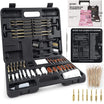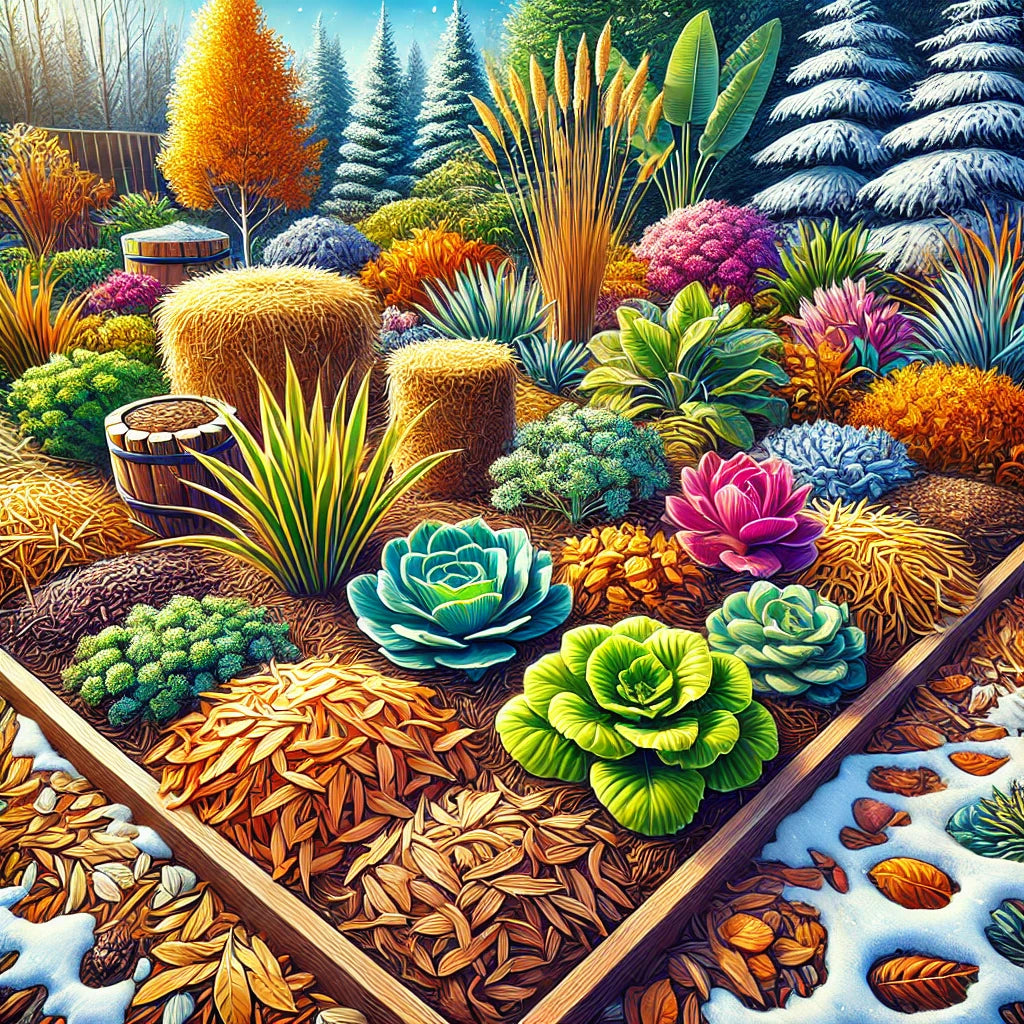As the colder months approach, your garden requires special care to ensure that it can withstand the harsh winter conditions. One of the most effective ways to protect your plants is through mulching. This guide will help you understand how to use mulch as insulation, keeping your garden healthy throughout winter and ready to thrive in spring.
Why Mulch Matters in Cold Weather
Mulch acts as a protective layer for your soil and plants, helping to regulate temperature, retain moisture, and prevent soil erosion. During winter, it serves as an insulating barrier that shields plant roots from freezing temperatures and sudden temperature fluctuations. Additionally, mulch helps maintain soil structure, preventing it from compacting under heavy snowfall or freezing rain.
Choosing the Right Mulch for Winter
Different types of mulch offer varying levels of insulation and protection. Here are some of the most effective mulching materials for cold weather:
-
Straw
Straw is an excellent choice for insulating vegetable gardens, perennial beds, and young trees. It’s lightweight, easy to spread, and offers good coverage. Be sure to use clean, seed-free straw to prevent weed growth in the spring. -
Wood Chips or Bark Mulch
Wood-based mulches like chips or bark work well around trees and shrubs. These materials break down slowly, offering long-lasting insulation throughout the winter months. -
Leaf Mulch
Fallen leaves, when shredded, make an effective mulch for garden beds. They provide natural insulation while slowly decomposing and adding nutrients back into the soil. Be sure to shred leaves to prevent them from matting and blocking air circulation. -
Compost
Well-aged compost can serve as a winter mulch, offering both insulation and nutrient-rich benefits to your soil. Apply a generous layer around plants to maintain soil warmth and promote early growth in spring. -
Pine Needles
Pine needles create an airy, moisture-retaining mulch that works well for acid-loving plants. They allow for good air circulation while protecting plant roots from frost.
How to Apply Mulch for Winter Protection
-
Prepare the Ground
Clear the garden area of any weeds, fallen leaves, or plant debris before applying mulch. This prevents pests and diseases from overwintering and affecting your garden next spring. -
Apply Mulch Generously
Spread a 2-4 inch layer of mulch around the base of plants. For tender perennials and young shrubs, consider adding an extra layer to ensure sufficient insulation. Avoid piling mulch directly against plant stems to prevent rot. -
Water Before Mulching
Water the soil thoroughly before applying mulch. This ensures the roots are hydrated and the soil remains moist throughout winter, especially in dry climates. -
Monitor Throughout Winter
Check your mulch periodically during the winter to ensure it hasn’t shifted or become compacted. Reapply or fluff up the mulch if needed, especially after heavy snowfall or rain.
Additional Tips for Winter Mulching
- Consider Windbreaks: In areas with strong winter winds, use barriers like burlap or windbreaks to prevent mulch from being blown away.
- Use Mulch Sparingly on Annuals: While perennials benefit from heavy mulching, annuals may not require as much. In fact, excessive mulch can smother delicate plants, so apply only a light layer.
- Keep an Eye on Snow Melt: As the snow begins to melt, check the mulch layer to ensure it remains intact and continues to protect your plants.
The Benefits of Winter Mulching
- Temperature Regulation: Mulch acts as a blanket, maintaining a more stable soil temperature even as air temperatures fluctuate.
- Moisture Retention: It helps retain soil moisture, reducing the risk of plant roots drying out during dry winter spells.
- Weed Suppression: While weeds may not be a big issue during winter, a good mulch layer prevents any early growth of spring weeds.
- Soil Health: Mulch adds organic matter to the soil as it decomposes, enhancing soil fertility and structure for spring growth.
When to Remove Mulch in Spring
As spring approaches, begin gradually removing the winter mulch layer to allow sunlight to warm the soil and encourage plant growth. Remove mulch slowly to avoid shocking plants with sudden exposure to colder temperatures. Start by thinning out the mulch around new shoots and growth, fully removing it as temperatures consistently warm.
Mulching for winter is a simple yet effective strategy for protecting your garden from the harshest elements of the cold season. By applying the right type and amount of mulch, you can help your plants survive and even thrive during winter, setting the stage for a successful growing season in spring.






















Leave a comment
All comments are moderated before being published.
This site is protected by hCaptcha and the hCaptcha Privacy Policy and Terms of Service apply.